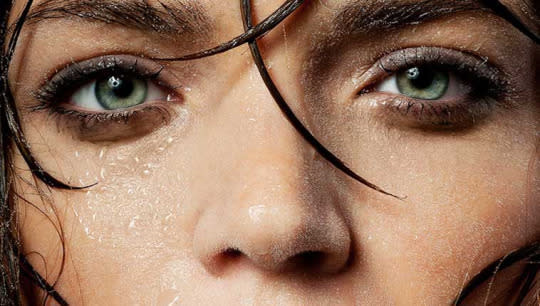The Amazing Links Between Exercise & Anti-Aging

That rush of adrenaline after a long run, spin, or yoga session is usually followed by a gorgeous, pink-cheeked flush—that might be the first thing you notice after exercise, but it’s not the only benefit.
Aside from the obvious perks (better mood, weight loss, toned muscles), recent studies indicate a direct link between your skin’s ability to stay young-looking and your exercise schedule. Here, we pulled together five ways your skin’s health is linked to exercise.
MORE FROM CHARLOTTESBOOK.COM:
Lose Ten Pounds But Gain Five Years?
The Best Athletic Gear For Your Skin
Charlotte Talks To Luxury Designer Michelle Waugh
1. Sweat Is Antibacterial
Always controversial but sometimes beneficial, sweat is a necessary evil (or blessing—depends on how you look at it). Sweating while you work out can be a sort of diy steam bath: it opens pores and dislodges whatever was stuck there, but the key is to wash soon after exercise to avoid drying the sweat and re-clogging your pores. Here’s the truly amazing part: recent studies have shown that perspiration contains a natural antibiotic known as Dermcidin, which kills E. coli and Staphylococcus aureus. Magic.
2. Increased Blood Flow Flushes Cellular Debris
Exercising increases your blood flow and re-oxygenates the blood at a faster pace than say, #netflixandchill. That blood goes to your heart, limbs, and elsewhere inside your body, but that also means it increases blood flow in your skin. CB expert dermatologist Dr. Ellen Marmur explains that “by increasing blood flow, a bout of exercise helps flush cellular debris out of the system. You can think of it as cleansing your skin from the inside.” Put down that remote!
3. The Fascia: Keep It Busy & Firm
Fascia is a web of tissue that holds your muscles, blood vessels, and nerves together—that’s what surrounds the blood we mentioned above. Your fascia needs to be kept springy and busy, so you can compare it to learning a language or getting used to a new habit: it’s all about consistent repetition. “Keep the body young by keeping elasticity in your tissue,” says Thomas Myers, an anatomy expert and author of Anatomy Trains: Myofascial Meridians for Manual and Movement Therapists. He explains, “We can train ourselves to be younger.” Essentially, you’re building muscle memory, but it’s anti-aging memory.
4. Myokines
According to this study (covered recently in the New York Times) myokines are released during exercise and might be the link between much younger skin and exercise: myokines are substances that enter the bloodstream and jump-start operations in cells. In other words, this is an even more in-depth look at what happens when blood flow is increased and the fascia are flexed—in the study, even people who started exercising late (and hadn’t exercised their whole lives) saw an immediate difference in the quality of their skin. When samples of skin were placed under a microscope, those who exercised had skin that “looked like that of a much younger person, and all that they had done differently was exercise.” So: where exactly can we buy these myokines?
5. Stress Reduction = Younger Everything
Working out maintains a regular level of the cortisol, a stress-related hormone. Dr. Noëlle Sherber, a board-certified dermatologist based in Baltimore, says “Elevated cortisol levels are linked to increased sebum production, which means more acne breakouts.” But if you don’t exercise and experience a spike in cortisol, that’s not the only thing that can happen. “Too much cortisol can also cause the collagen in skin to break down,” says Sherber, “which can increase wrinkles and sagging.”
